
Stadium Dinamo Zagreb
Stadion Maksimir exterior. Dinamo Zagreb's home stadium is Stadion Maksimir. The stadium is situated in the northeastern part of Zagreb, opposite the city's largest urban park, Maksimir, which also lends its name to the eponymous neighbourhood. It was officially opened on 5 May 1912 and has been noticeably upgraded several times thereafter.

Stadion Dinama Zagreb ImageFootball
All information about Dinamo Zagreb (SuperSport HNL) current squad with market values transfers rumours player stats fixtures news News. Stadium: Maksimir 35.123 Seats; Current transfer record: +€31.08m + GNK Dinamo Zagreb; GNK Dinamo Zagreb II; GNK Dinamo Zagreb U19.

New design Dinamo reveals details of new Maksimir
Maksimir Stadium (Croatian: Stadion Maksimir, pronounced [ˈstâdioːn mǎksimiːr]) is a multi-use stadium in Zagreb, Croatia.Named after the surrounding neighbourhood of Maksimir, it is one of the largest stadiums in the country with a current seating capacity of 25,912 and a maximum possible capacity of 35,423. It is the home stadium of Croatian club Dinamo Zagreb and has been used since.
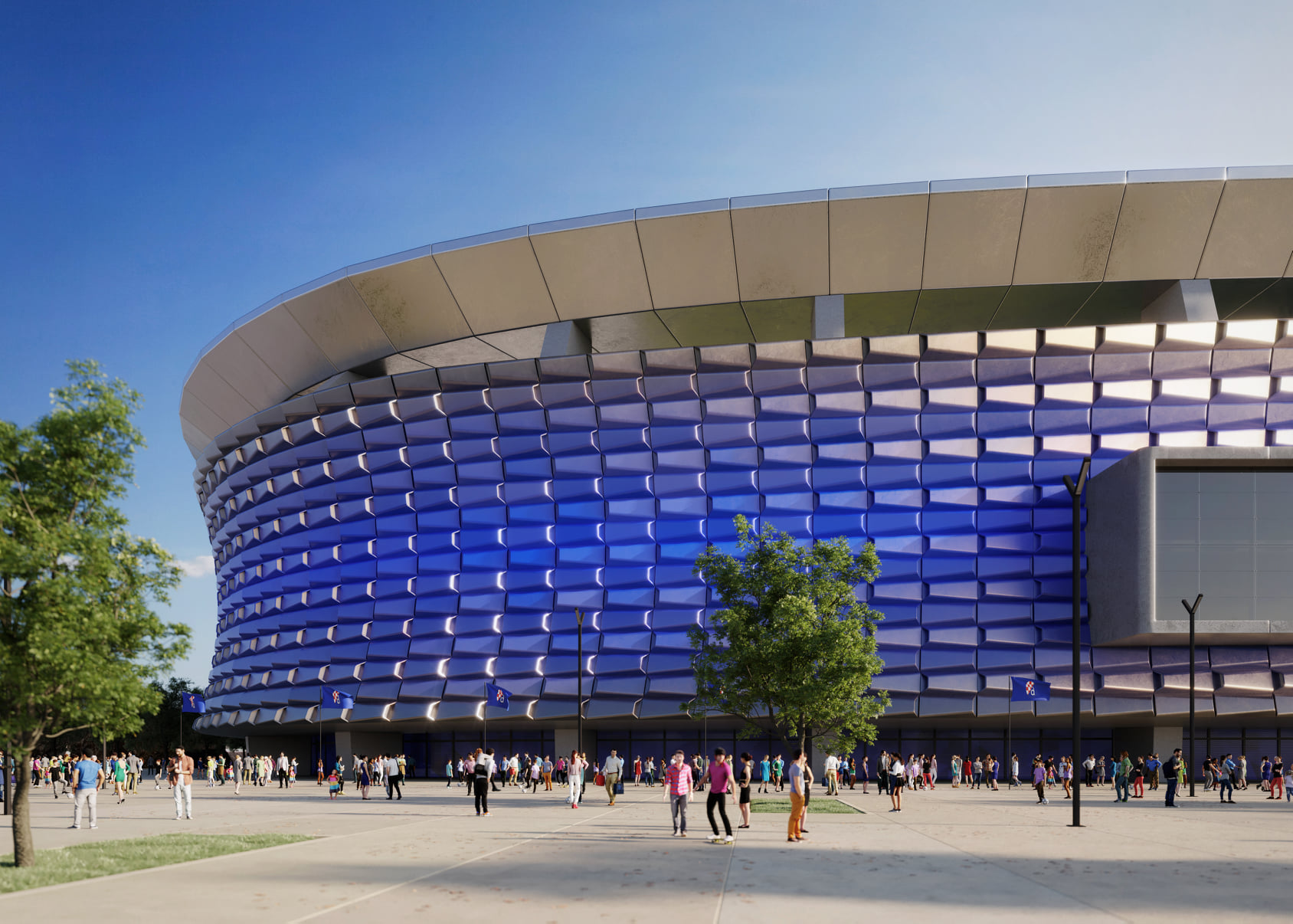
New design Dinamo reveals details of new Maksimir
Das Stadion Maksimir, kurz Maksimir, ist ein Fußballstadion in der kroatischen Hauptstadt Zagreb.Es ist das größte Stadion des Landes und Heimspielstätte des kroatischen Rekordmeisters Dinamo Zagreb.Die Spielstätte liegt im gleichnamigen Stadtviertel im Nordosten der Stadt, die Eigentümerin des Stadions ist. Auf der anderen Straßenseite liegt der Zoo Zagreb im Maksimir-Park.

Stadion Maksimir GNK Dinamo Zagreb YouTube
In its first decades, Stadion Maksimir was the home HAŠK Građanski, but got quickly expanded and turned into Zagreb's prime sports stadium. In 1948, Dinamo moved in. In the post-War years, Stadion Maksimir was a rather bare bowl-shaped stadium that consisted mainly of terraces. The stadium had a capacity of about 45,000.

Dinamo Zagreb GNK Stadion Maksimir FICAZ TV Football Index
GNK Dinamo Stadium. Dinamo Zagreb's home stadium is Stadion Maksimir. The stadium can be found in the north-eastern portion of Zagreb, directly across the street from Maksimir Park, which is the largest urban park in the city and also gives its name to the neighboring neighborhood. It was presented to the public for the first time on May 5.

Stadion Maksimir, Zagreb, Dinamo Zagreb Flickr
Expansion of temporary stadium for Dinamo. In a little less than a year, work should begin on the reconstruction of the stadium, whose capacity will be increased to 12,000 from the current 8,850. However, there are currently only 3,850 seats at the facility. The expanded Stadion NK Zagreb will be completely covered, in the English style, which.
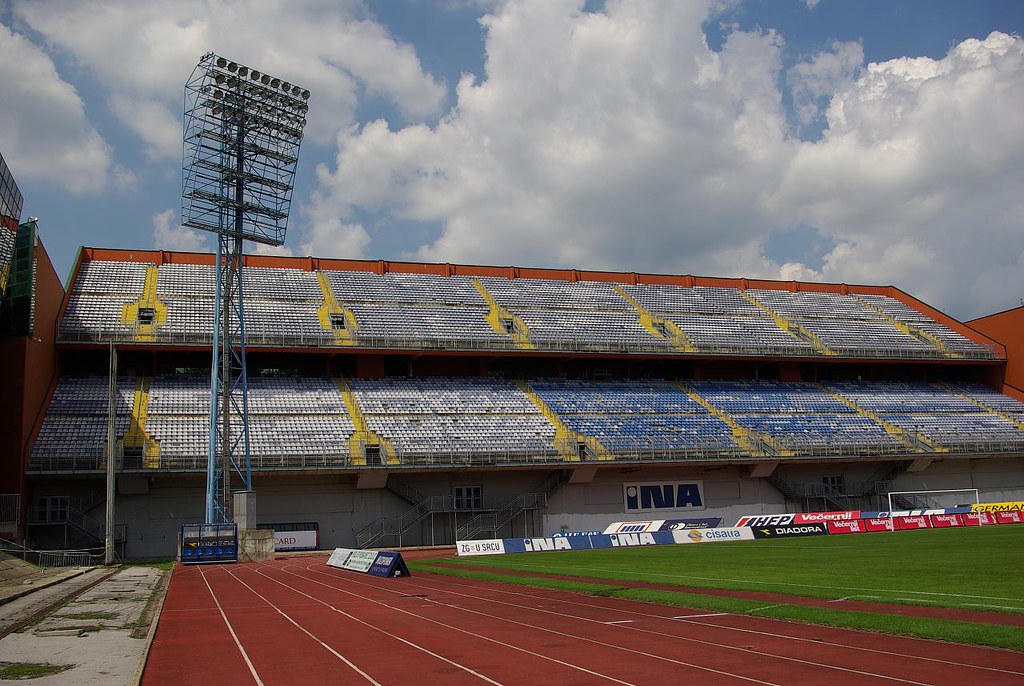
Stadion Maksimir, Zagreb, Dinamo Zagreb Flickr
Izvor: Wikipedija. [1] Stadion Maksimir je nogometni stadion u Zagrebu. Smješten je u istočnom dijelu grada, nasuprot parka Maksimira. Službeno je otvoren 5. svibnja 1912. godine. Preuređivan je nekoliko puta. Na stadionu utakmice igraju GNK Dinamo i Hrvatska nogometna reprezentacija . Povijest izgradnje[ | uredi kôd]

an aerial view of the soccer stadium in blue and yellow
The Maksimir Stadium was officially opened on May 5, 1912. At that time, Građanski trained and played at the Zagreb stadium, and Dinamo took over as the host in 1948. Over its more than hundred-year history, the stadium has undergone several renovations. In the fall of 1997, seats were installed on the eastern and southern stands.
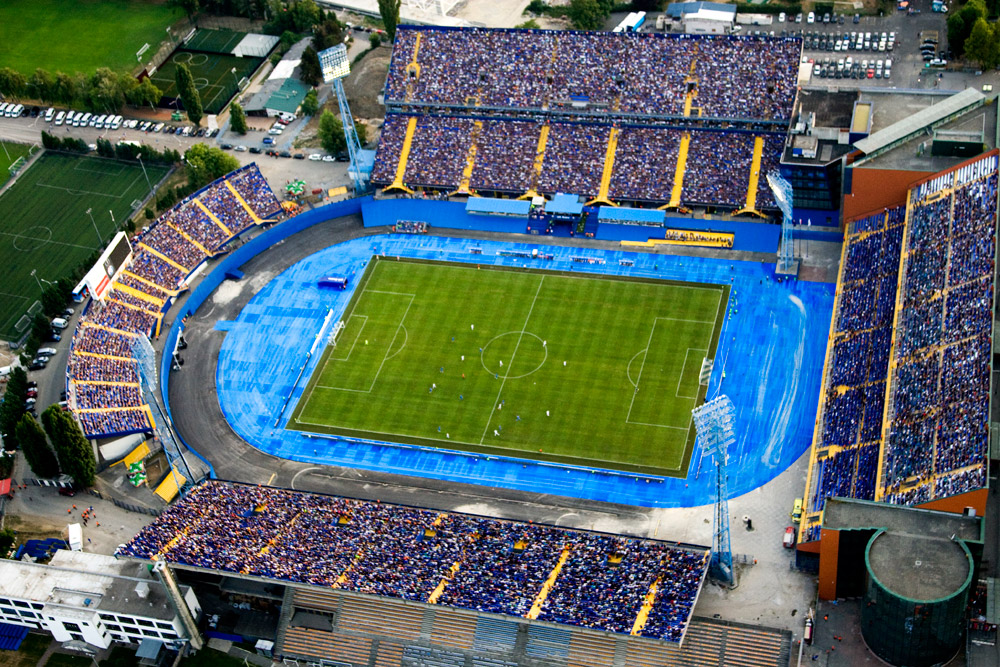
Stadium Dinamo Zagreb
Croatian football champion GNK Dinamo Zagreb has unveiled plans for a brand new 34,000-seat stadium that would be located in the same area as its historic Stadion Maksimir home ground. The Croatian Prva HNL team said the project, estimated to cost €60m and take three years to complete, would include a state-of-the-art stadium with three tiers.
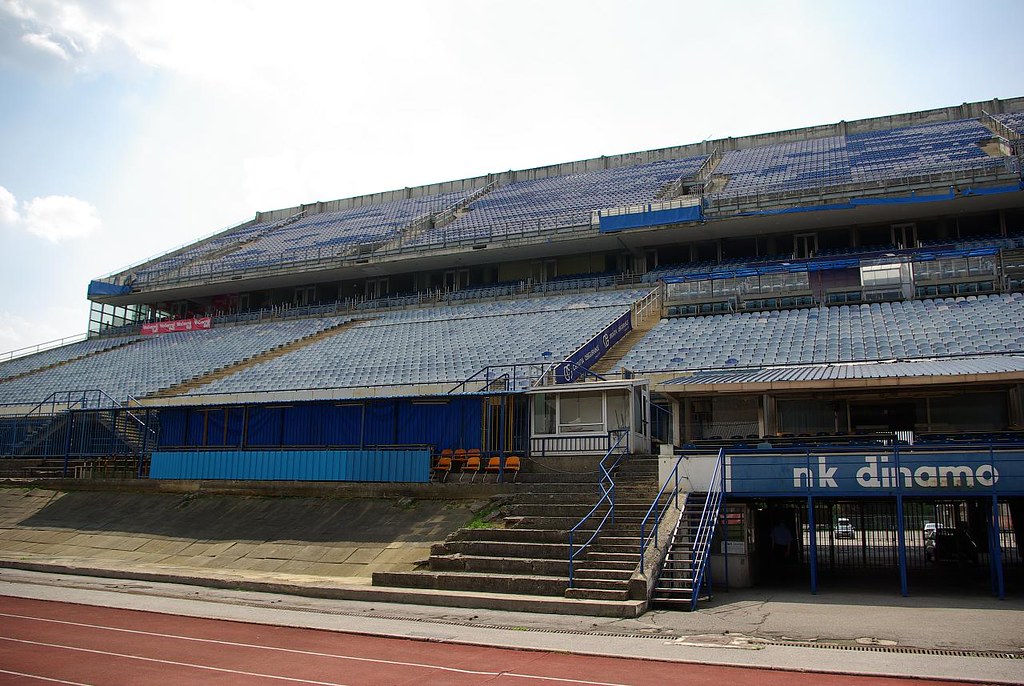
Stadion Maksimir, Zagreb, Dinamo Zagreb a photo on Flickriver
Stadion Maksimir located in the capital city of Zagreb is the largest stadium in Croatia, with a capacity of 37,168 and besides being home of the famous GNK Dinamo Zagreb, it is also home of the National Football team. The stadium has underwent numerous renovations since opening in 1912, with the 1997 expansion arguably being the most significant.
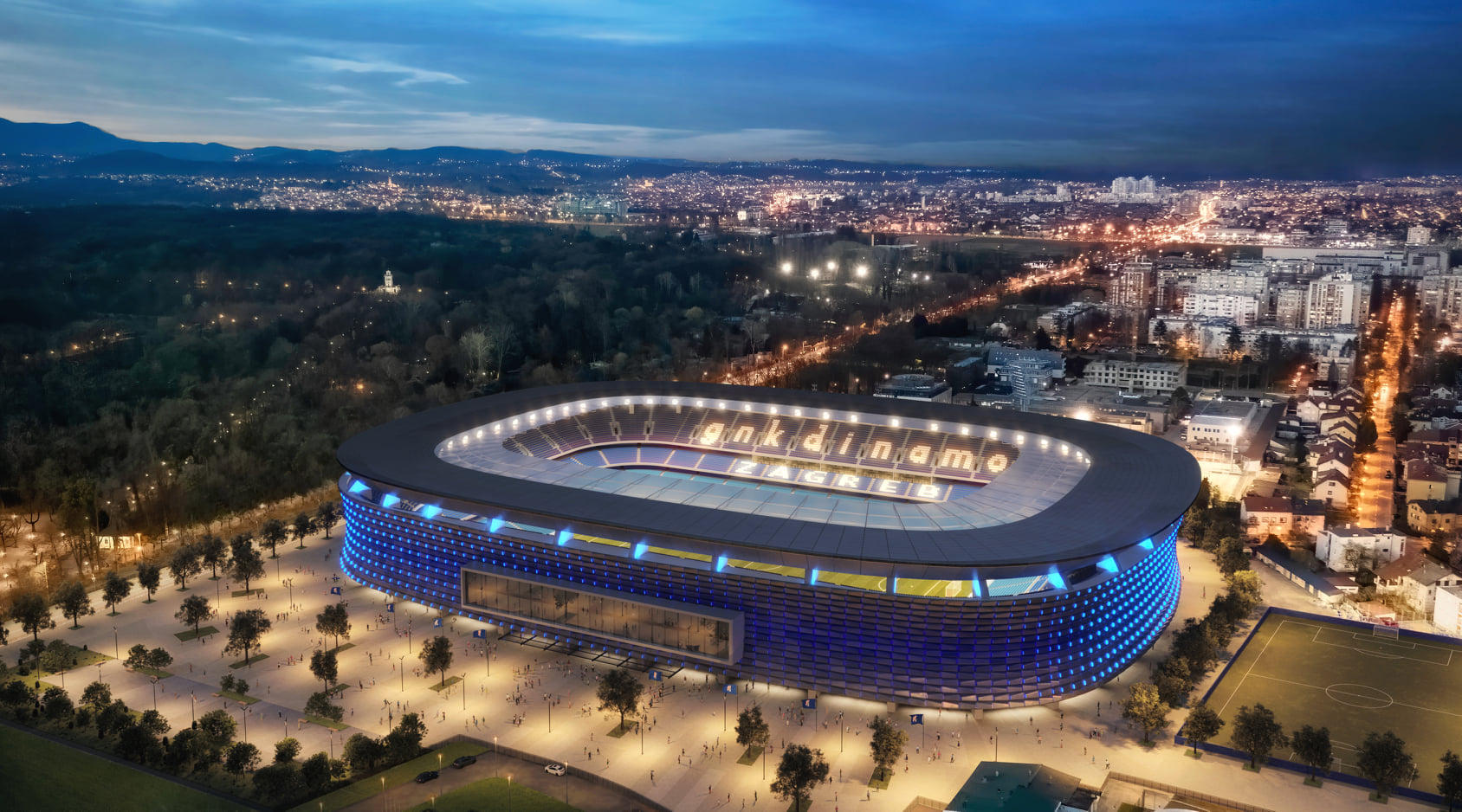
Future Dinamo Zagreb Stadium TFC Stadiums
All info around the stadium of Dinamo Zagreb. Historical grounds can be chosen as well. News . Transfers & rumours . Market values. GNK Dinamo Zagreb . 24 1 4 7 16 . SuperSport HNL League level: First Tier.

Dinamo Zagreb Stadion Shop DINAMO
The new stadium is expected to be used by the Dinamo Zagreb team while the reconstruction of the Maksimir Stadium in the centre of the Croatian capital is underway. "Kranjčevićeva has a capacity of 5,000 seats, and we will build one of the most modern stadiums in Europe that will accommodate 12,000 spectators, with four fully covered stands.

Stadium Dinamo Zagreb
Maksimir. Stadion Maksimir službeno je otvoren 5. svibnja 1912. godine . Tada je na zagrebačkom stadionu trenirao i igrao Građanski, a Dinamo je nastavio u ulozi domaćina 1948. godine. Stadion je u svojih više od sto godina bio nekoliko puta preuređivan. U jesen 1997. na istočnu i južnu tribinu postavljene su sjedalice, prigodom "face.
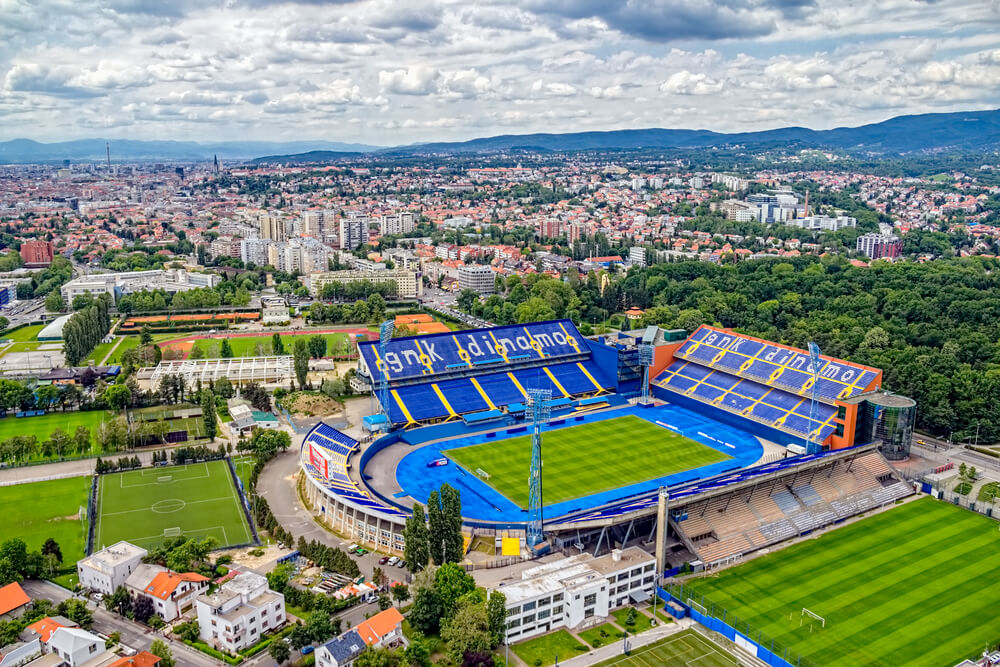
Dinamo Zagreb Verein, Stadion und Fans europapokal.de
Stadion Maksimir: Dinamo Zagreb / Croatia . Maksimirski perivoj, Zagred, 10000, Croatia. By Suradnik13 (Own work) [CC BY-SA 4.0-3.0-2.5-2.0-1.0], via Wikimedia Commons. Named after the neighbourhood that it was built in, Stadion Maksimir opened its doors for the first time back in 1912. It has undergone numerous changes over the years, not.

Stadion Maksimir, Zagreb, Dinamo Zagreb Flickr
The Dinamo Zagreb-Red Star Belgrade riot was a football riot which took place on 13 May 1990 at Maksimir Stadium in Zagreb, SR Croatia, then part of SFR Yugoslavia, between the Bad Blue Boys (supporters of Dinamo Zagreb) and the Delije (supporters of Red Star Belgrade).The incident took place just weeks after Croatia's first multi-party elections in almost fifty years in which the parties.